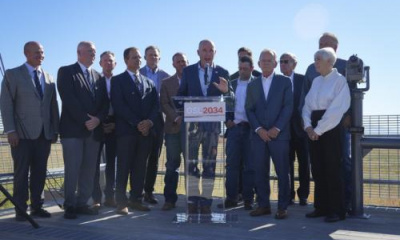SALT LAKE CITY — The Great Salt Lake has dropped to such a low level, the U.S. Geological Survey's measuring system at the marina no longer works.
"Levels are too low for the Saltair Lake Elevation Gage to measure water levels in the south arm. The gage has been in use for over 100 years," the Utah Department of Natural Resources said in a statement to FOX 13 News on Friday. "The U.S. Geological Survey is now reporting the south arm elevation from the causeway gage near Lakeside. The gage stations are operated by USGS, with cooperative matching funds from DNR and the Division of Forestry, Fire & State Lands."
In its most recent drought report, the agency noted the Great Salt Lake is at 4,188.9 feet, which is down from the previous record low of 4,190.2 feet on July 3. The lake is predicted to continue to decline for a couple more weeks, then start to refill somewhat as cooler temperatures and winter arrives. The unknown is by how much.
The Great Salt Lake has dropped to record lows as a result of Utah's prolonged drought, climate change and water diversion. State leaders have reacted by rushing to pass water conservation measures and spend millions on efforts to try to get more water into the lake.
Beyond accurate measurements of the lake, the marina can no longer hold boats. The boat ramps extend into a muddy lakebed. Utah State Parks are unable to launch rescue boats from the site and has had to find other nearby places to work from. Recreational boats were pulled from the marina earlier this summer.
"The Department of Natural Resources is in the process of finalizing plans to dredge the marina to allow for emergency boat operations," the agency said.
However, Antelope Island and the Great Salt Lake Marina remain open to visitors where Utah State Parks hosts educational events to teach people about the lake's ecosystem and why it is so important to the state.
"Great Salt Lake is critical to our state. It contributes $1.3 billion to our economy, provides over 7,700 jobs, supports 80% of Utah’s valuable wetlands and provides a stopover for millions of birds to rest and refuel each year. It also contributes to our snowpack," the department said in its statement. "We are committed to finding solutions to protect this critical resource. By doing so, we help our economy, our environment, our wildlife and our future."









